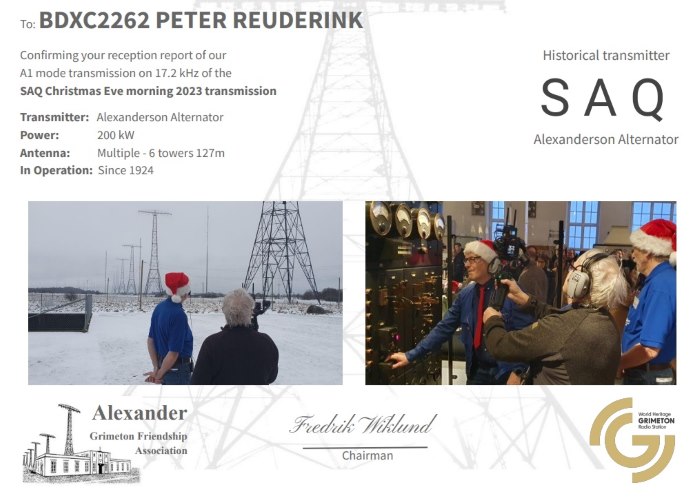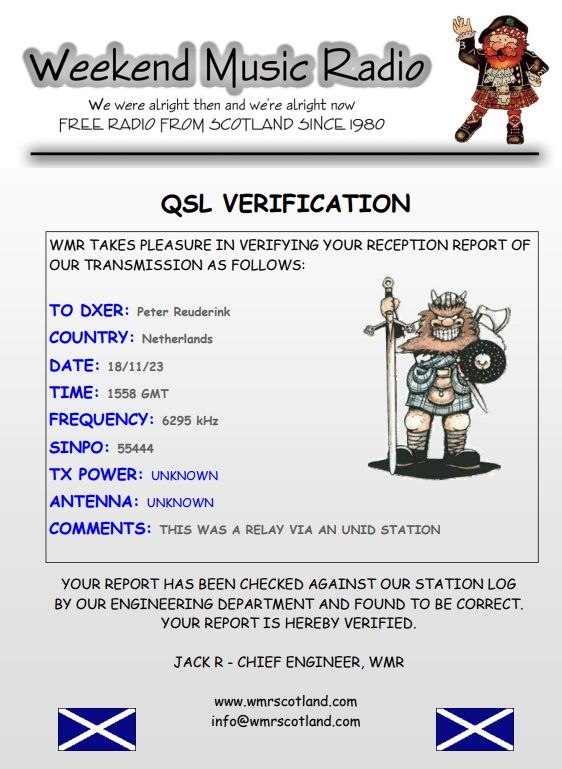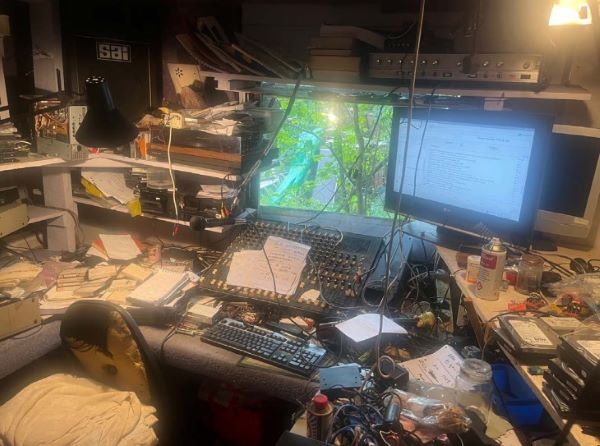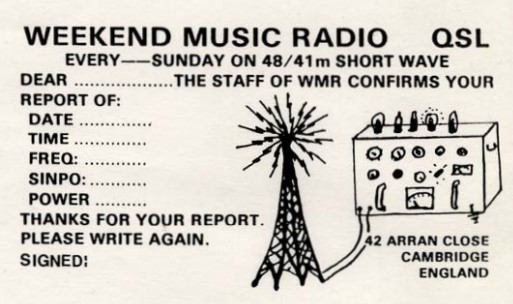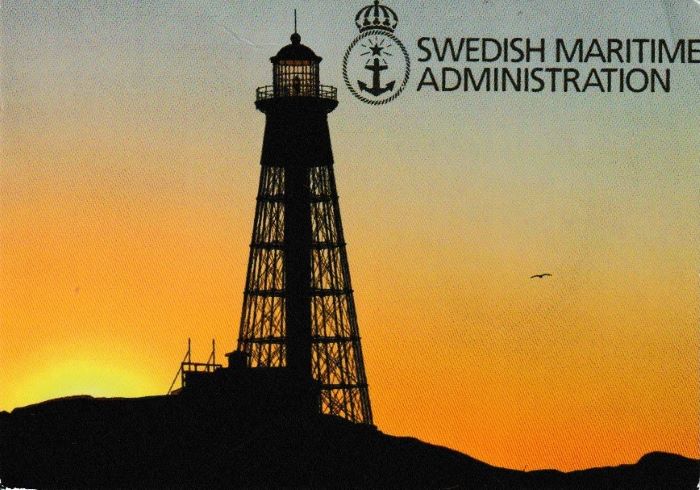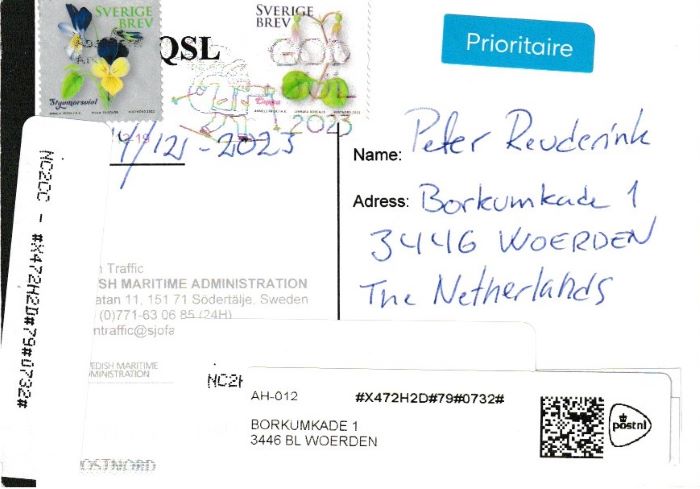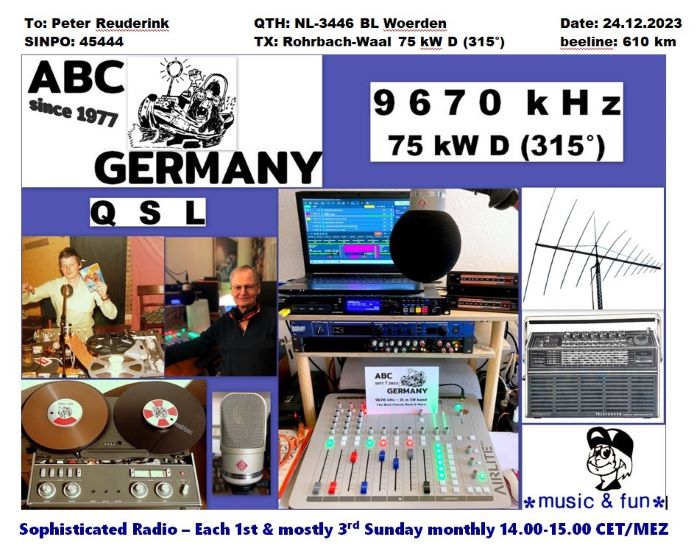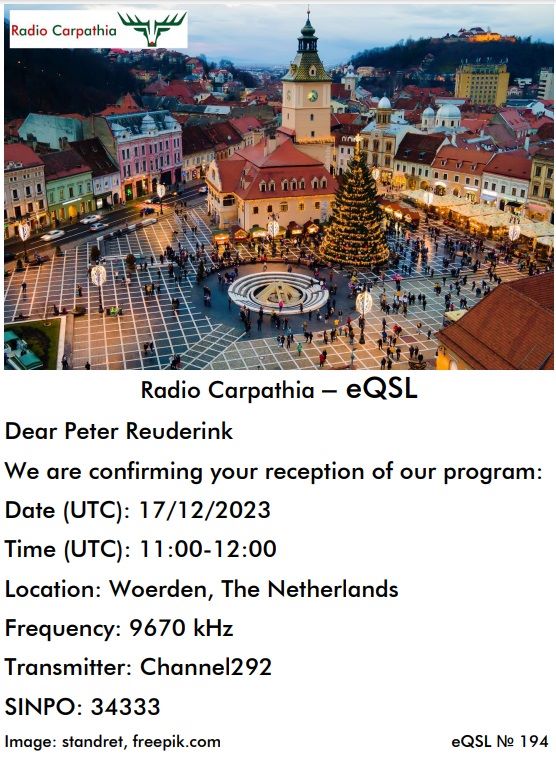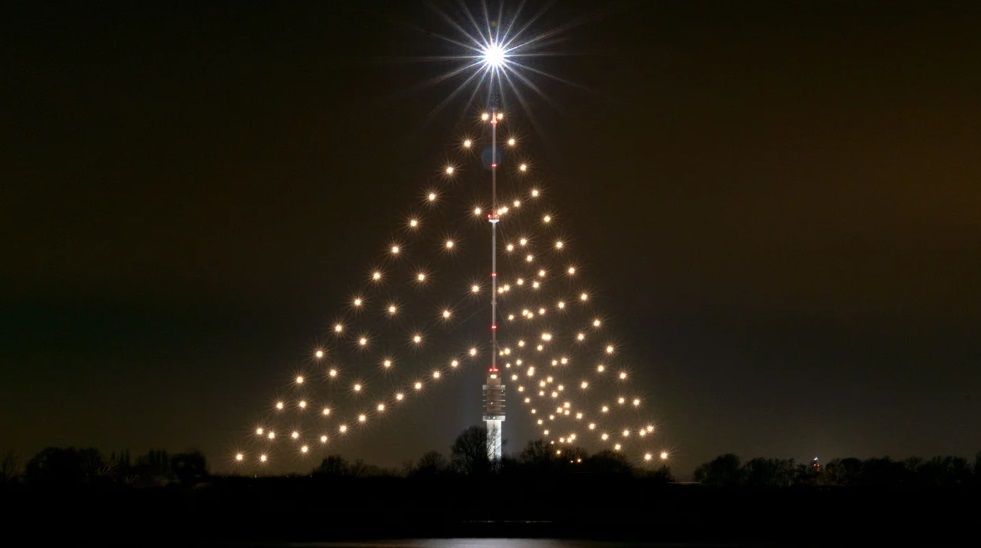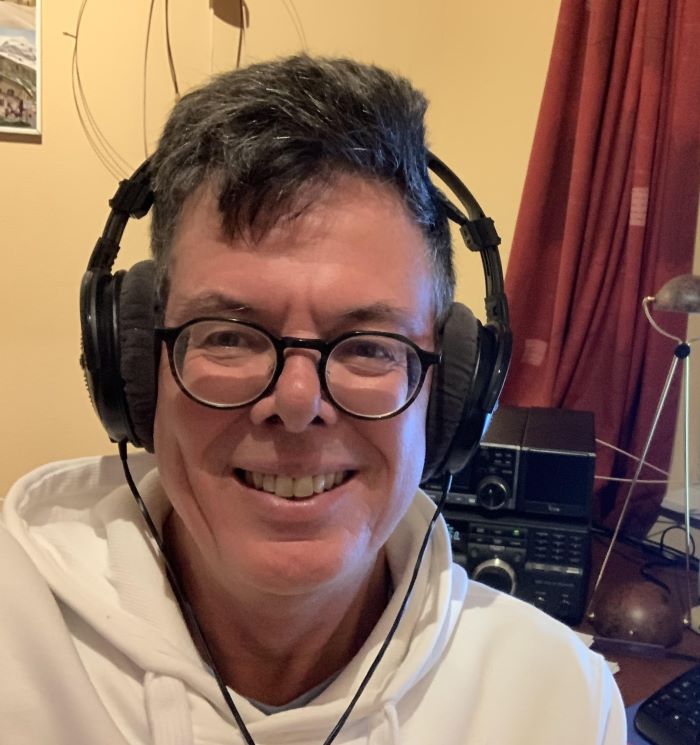Galei Zahal from Israel has reactivated their medium wave transmitter on 1287 kHz (50/100 kW), and there are also reports that 945 kHz is active. Galei Zahal is the broadcasting station of the Israeli Army IDF. It’s also abbreviated as “Galatz”.
I only tried briefly to receive this station this morning as I was busy with finishing the Collective Listening Event 299 on NDBs. The local LPAM station Kilrock on 1287 kHz was dominating the frequency. But guess what? They sent a message in response to listeners complaining about interference in the evening, explaining that it was Galei Zahal causing the issue. Check this YouTube recording of the Kilrock message (in Dutch obviously).
In 1999 I received Galei Zahal on 6895 kHz, for which I received a QSL. But for more than a decade they have been active on FM only.
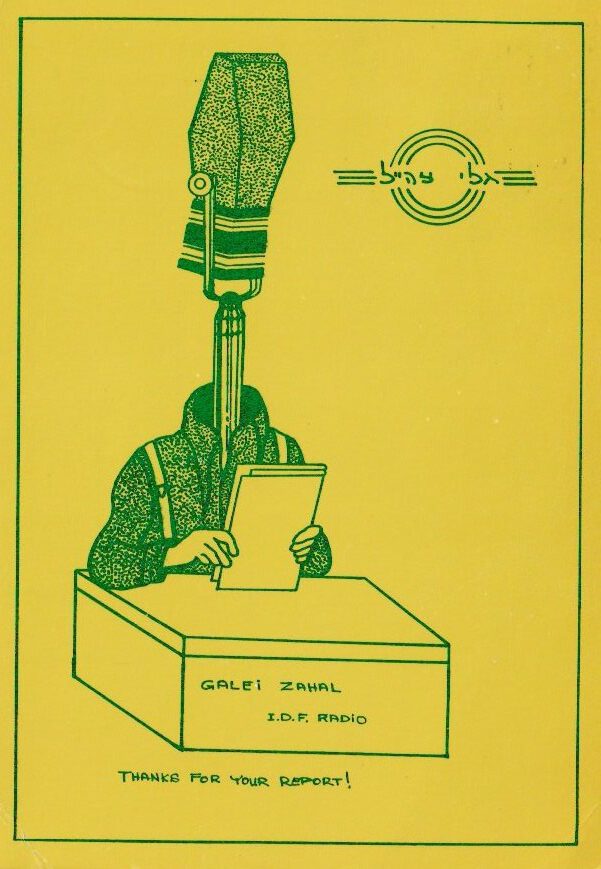
UPDATE: received the station today (3JAN24) on 1287 kHz, around 17:30 h UTC, fading in/out over local LPAM Kilrock, up to near perfect quality. Later in the evening also audible on 945 kHz, here well over Radio Romania Actualitati.
